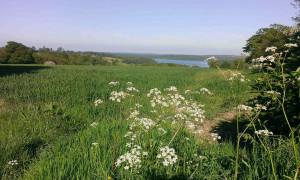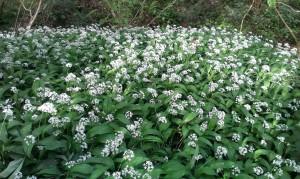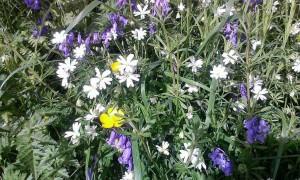Ecology in LVIA; Value of building ecological resilience, Fauna and flora in LVIA reports in Sussex and Surrey.
Ecological Networks. Habitat creation. Adding Biodiversity. Biodiversity Net Gain. Biodiversity Offsetting.
Following the Lawton report (2010) which underlined the importance of ecological networks; baseline studies into LVIAs for LPAs for landscape planning in Sussex, Kent and Surrey, include investigation of ways to conserve, strengthen and enhance site ecology and ecological networks by biodiversity offsetting. This information can include PEARs (or Preliminary Ecological Appraisal Reports.) See Landvision Ecology page for further details on PEARs and why they are required.
This information is increasingly important because the government is committed to tackling climate change and thus to including ways of adding biodiversity (biodiversity net gain) in the planning process. See the latest NPPF for details on landscape and biodiversity commitments.
Similarly, habitat creation and improving ecological linking to habitats on site to those beyond site are therefore equally important goals.
The Natural Environment White Paper (2011) identified the government commitment to implementing the principles of the Lawton Report’s findings. It identifies the UK government’s commitment from 2011, on the need to collectively act together, “bigger and better” to build resilience against climate change. Action required to stem Climate change will be further debated in Glasgow, Scotland, in 2020.
Int he meantime, current Government guidance for biodiversity offsetting, shows that nature conservation needs a “step change”, to safeguard ecological networks. Natural networks of green spaces matter hugely. This is beacuse they supply ecosytem services, (clean air, water, food supply, fuel, health and well being linked to views of green space and bird song). Perhaps most importantly they have a priceless intrinsic value as habitats for flora and fauna. Ecology in LVIA is intrinsic too in the planning process as a tool used by landscape architects in trying to prevent fragmentation caused by intensive agriculture or other development. For instance, some sites have special qualities such as historic hedge banks. Equally, a site may have a woodland Shaw. Alternatively, it may contain a rough meadow pasture with pond habitats for protected species. The ecology of lfora and fauna in their habitats, plus intrinsic value of these special areas in terms of landscape ecology, jointly act by acting as a form of resilience in ecological networks. Landscape effects of a proposed development on ecological resilience and networks will be appraised. According to the Government White Paper (2011), there will be a commitment to “conserve and enhance” protected landscape and to add biodiversity, to combat climate change and other pressures, by adding and offsetting possible biodiversity loss, which will be assessed as part of the LVIA process by our landscape architects.
By using Landvision you will have a dedicated team of experts, 35+ years experience, who will be able to survey the site. Using a Phase 1 Extended Ecology Scoping survey to determine likely Protected Species, of rare or protected plants and animals. The Wildife & Countryside Act, 1981 protects wild species of fauna and flora. The NERC Act, 2006 protects natural habitats used by protected species, for instance, wild flower meadows, historic hedgerows and veteran trees; these are all habitats which can be used by protected species such as Bats. If there are protected species of fauna and flora, mitigation in the LVIA can take the form of tree planting, hedge planting or land management or habitat creation and mitigation for BAP (Biodiversity Action Plan) species, for instance, of invertebrates or reptiles, in Sussex or Hampshire.

The mitigation may take the form of a specialist Landvision landscape plan or a Landvision management plan. Similarly, these may include mitigation for BAP (Biodiversity Action Plan) protected species, on site in Kent or Surrey. These pragmatic areas of expertise within the ecology of LVIAs are covered under the Landvision roof; a one stop shop for landscape, trees, ecology and horticulture, for both design and management.
Following the findings of the Lawton report (2010) and the Government White Paper in 2011, “The Natural Choice. Securing the value of nature” now new developments and associated landscape works need to conserve and enhance. Therfore, they will need to be more frequently linked in with Fauna and flora ecological networks, this is to build ecological resilience. LVIAs will therefore now need to include more Green infrastructure links and to follow nature conservation guiding principles. Adding biodiversity and ecological networks, will enable Offsetting as well as sound ecology principles on habitat creation and species protection in Surrey, Sussex and Kent.
However, we must remember the detailed findings of Landvision and other PEAR Ecology reports whcih may be required as part of the LVIA process. Where protected species occur they may well need mitigation during the construction process. This may include specific alternative habitat creation to compensate for habitat loss or due to the fragmentation of habitat of protected species, due to the proposed development(see government guidance for developers here.) Similarly, there could also be a need for additional new enhancements, for instance, to maintain ecological networks and because we may need to offset biodiversity loss and to build resilience through more “joined up” habitat management after the project has been installed in Kent or Surrey. This may take the form of specialist suitable management of habitats after the development has been constructed.

Importance of unusual fauna and flora which may occur within, for example an Ancient Semi-Natural Woodland (ASNW) setting near the site in Sussex, will be identified. The ASNWs are protected habitats due to their rarity, as well as for the Historical and Cultural Heritage value attached to them. They have special qualities and a high landscape value. The residents of Hampshire and Kent aswell as visitors to these counties and Surrey and Sussex regard them as heritage assets. As such they are irreplaceable habitats and the species of flora and fauna within them are highly prized.
Species rich wild flower meadows are another habitat of Kent, Surrey and Sussex; these may be historic landscapes with cultural heritage value highly likely to be safeguarded in an LVIA report due to rarity of habitats. Frequently, such meadows contain unusual protected plant and animal species and are deemed SSSIs. (Sites of Special Scientific Interest.) LVIAs will seek to safeguard these habitats and their rare species as they can be increasingly fragmented due to agricultural intensification, changes in farming practices and pressure to develop agricultural land, in The Green Belt in Surrey and Kent, as well as in other protected landscapes such as National Parks in The New Forest in Hampshire and The South Downs National Park in Hampshire and Sussex.
Other ecology and surveys;

Protected species of amphibians such as GCN (Great Crested Newt) in kent and Sussex have a short window of opportunity for breeding surveys to be carried out in early Spring. By inserting green infrastructure links, and recreating ponds and hedgerows, linking to established habitats of protected species such as Bats and GCN, can be strengthened.
Reptiles such as Slow Worms have occurred on sites in Kent and Surrey as well as sites in Sussex. Slow Worm are legless lizards and as they are reptiles have other specific requirements regarding warmth and daily habits to maintain their preferred temperature. Timings of surveys, depend on these daily habits; as Slow Worm are diurnal, they are out in early morning and then early evening. So, timing ecology surveys depends on type of Protected Species, as well as other variables, such as whether the weather is fine and warm early in the season.
If it is unseasonably wet and cold when surveys are scheduled, your survey dates may need to be re arranged for best time of survey. For advice to avoid delays to your planning application, and so avoid delays to construction programmes on your project, ring 01892 782200 to discuss your LVIA and ecology survey work with our team of experts.
For more information on the role of landscape architects in LVIAs go to our ecology page and green infrastructure within LVIAs. For any advice on timing of surveys required, go to the contacts page or ring 01892 782200.
Save
